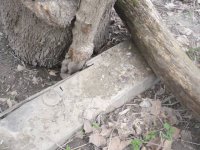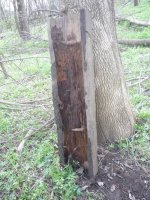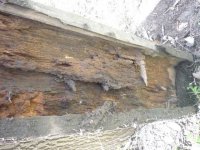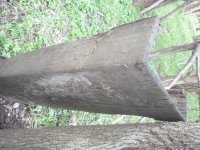B
BigDan
Guest
I have two items to identify. These are from an area on the Mackinaw river in Illinois where a bridge crossed the river and a grist mill once operated in the 1850's. The first item, is a large plank half buried parallel to the river, roughly fifteen feet up shore. It was ten feet wide, at least. I found it by walking an old road from the time period, easy enough to see, and the road led me right to the plank! I believe it may be part of the old bridge. But, notice the bolt? Were nuts and bolts in use that long ago? If not, this must be from a later bridge.
The second item, (Three pictures) I found in the woods along the river. I propped it up against a tree to take better pictures. It is about four feet long. It is all one piece of wood. Notice the outside has been planed, and if you look closely, so was the inside. Time, has caused the inside to rot, and there is even some growth in there like the tree decided it wasn't "dead" yet. But my suspicion is that this may be an old sluice?
Folks, thank you for reading, any thoughts will help.
Big Dan
The second item, (Three pictures) I found in the woods along the river. I propped it up against a tree to take better pictures. It is about four feet long. It is all one piece of wood. Notice the outside has been planed, and if you look closely, so was the inside. Time, has caused the inside to rot, and there is even some growth in there like the tree decided it wasn't "dead" yet. But my suspicion is that this may be an old sluice?
Folks, thank you for reading, any thoughts will help.
Big Dan









